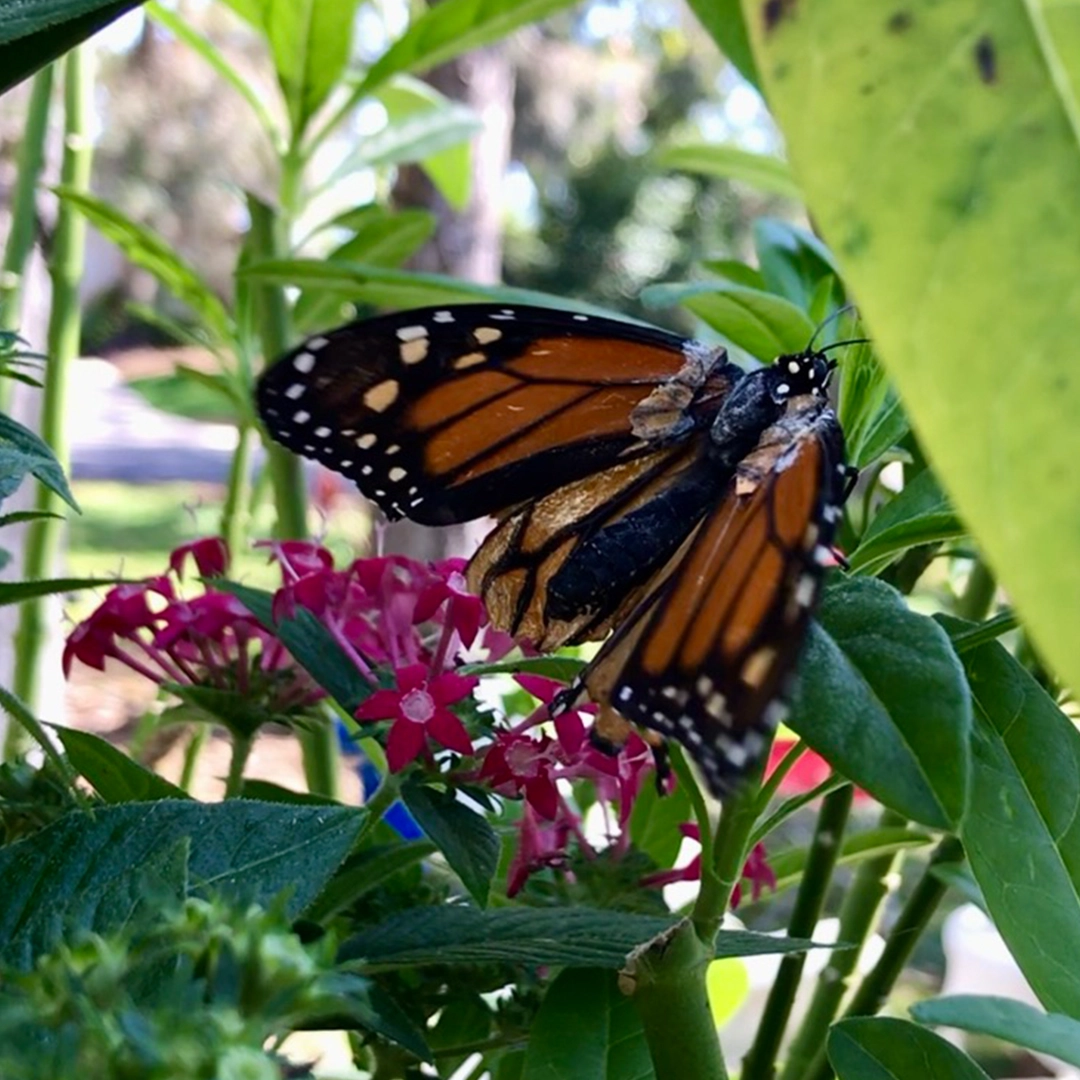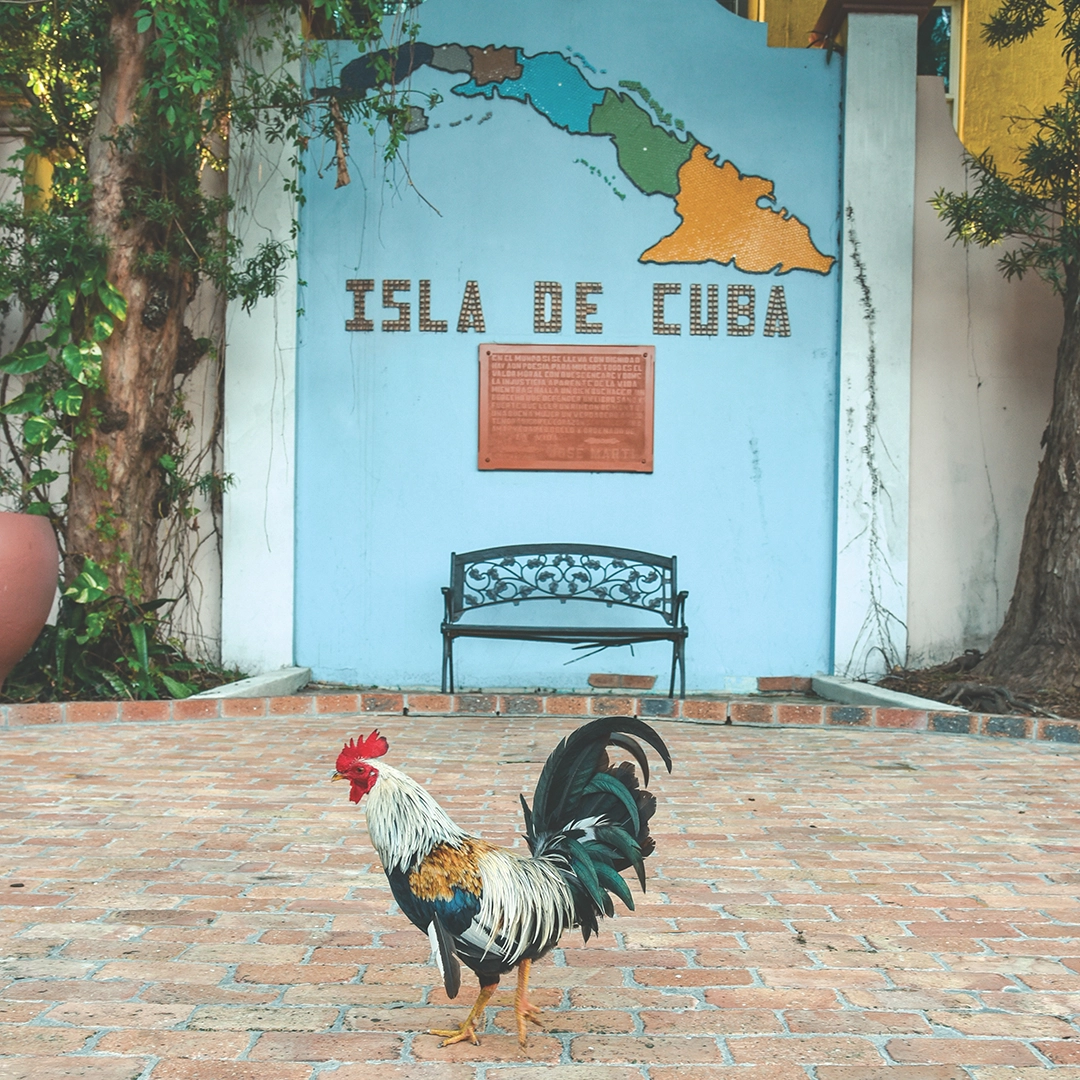by Bucky McMahon | August 4, 2020
Does Florida’s Water Spring Eternal?
Bottled water companies have been pumping the natural resource from Ginnie Springs for years, but when Nestlé wants to up the ante, scientists and activists worry there is nothing left to give.

All water is holy water. Its three-atom trick, like a cosmic version of three-card monte, entertains, amazes and nourishes us as an imponderable and improbable miracle. Nothing in our world is possible without water. We ourselves are mostly water, water thinking about itself. And so, as ever, it feels like a blessing, on this bright and balmy (if unseasonably warm) Saturday morning in January, to be adrift upon it, riding the gentle current of the Santa Fe River through its sinuous bends. Towering bald cypresses impart a cathedral majesty to the banks; tannins from these trees stain the water dark, while some 60 springs—among them Lily, Gilchrist Blue, Rum Island, Poe and Ginnie—pour in a competing clarity.
In my rental sit-on-top, I’m following behind a small flotilla of paddlers, “kayaktivists” bearing brightly colored signs. They’ve gathered to protest the renewal of a permit that would allow a local High Springs family, the Wrays, to sell more than a million gallons of spring water per day to the multinational Nestlé corporation. The Wrays, who own the land surrounding Ginnie Springs and operate a popular campground and recreation site there, also own Seven Springs Water Company. Under this name, they have sold water to various companies for more than two decades, but never in such quantity, and not previously to the controversial food giant Nestlé, which produces the Zephyrhills and Pure Life brands in Florida.
In the small town of High Springs—the “Gateway to the Springs”—which caters to nature-loving tourists from all over the world, the bottled water business has never been popular. Heavy trucks from the factory adjacent to Ginnie Springs clog traffic on High Springs’ quaint main street; plastic bottles all too often end up on the bottom and shores of the Santa Fe River and its nearby tributary the Ichetucknee River. Now, with the health and vitality of these rivers in steady decline, the new deal with Nestlé has angered many. While water officials debate and delay a decision on the permit, there have been protests in High Springs and contentious town hall meetings in the area. In statewide, national and even international media, the controversy has been framed as a crossroads in Florida’s water usage policy and as a skirmish in the coming worldwide “water wars.”
Today’s peaceful “sit-in,” sponsored by Our Santa Fe River, a local nonprofit environmentalist group; the Sierra Club; and the international movement Extinction Rebellion, has brought out about 20 paddlers committed to making some noise and asking some fundamental questions about the future of Florida’s waters—for recreation, wildlife and drinking.
Merrillee Malwitz-Jipson, former president and current board member of Our Santa Fe River, and co-owner (with her husband) of the High Springs cafe, gallery and boat rental company Rum 138, has a lot of legal experience fighting threats to the river, which is her inspiration as well as her livelihood. Regarded locally as a “water icon,” often solicited for her opinion, she has thought carefully about how to defeat the permit application. The Suwannee River Water Management District imposes a “three-prong” test for permits: 1) Reasonable and beneficial use; 2) Must not interfere with existing legal use; 3) Must be consistent with the public interest. While the application might fail on all three counts, Malwitz-Jipson regards No. 3, “public interest,” as its weakest claim. Indeed, “To put our water in plastic bottles is the most detrimental thing we could do to our planet,” Malwitz-Jipson says.

Today, as the little armada approaches Ginnie Springs, Malwitz-Jipson leads a floating Socratic seminar for the boats that bump alongside hers. Can a body of water such as the Santa Fe River, despite its quicksilver nature, be said to have legal standing in a court of law? “‘Standing’ is the word you hear,” Malwitz-Jipson muses, “from the lawyers.”
In fact, due to inadequate water flow and water levels, the District has declared the Santa Fe River to be threatened. It is, therefore, legally “in recovery.” Yet, as Our Santa Fe River and other environmental organizations, like the Howard T. Odum Florida Springs Institute, frequently point out, the Santa Fe River is not being protected. It is not recovering. Water flows and levels continue their historic decline. Once-luxuriant bottom grasses have been usurped by bright green filamentous algae that feed on nitrate pollutants. Biologists have observed an exodus of starving turtles hauling their algae-festooned houses miles across land in search of healthier water.
At the heart of the issue is the health and longevity of the vast Floridan aquifer, the invisible reservoir of potable water that underlies 100,000 square miles of Florida, as well as parts of southern Georgia, Alabama and South Carolina. The historically saturated state of Florida, its aquifers seemingly perpetually rejuvenated by storms, is rapidly approaching a watershed moment (pun intended). But vast never means infinite. Groundwater extraction has ballooned by 400 percent from 1950 to 2010, according to a Florida Springs Institute report. To continue to believe there will always be more, always be enough, is to indulge in magical thinking.
Zephyrhills is Nestlé. They’re putting your water in plastic, and plastic in your water.
— Merrillee Malwitz-Jipson
The more specific question the protestors are asking, as seen on their hand-lettered signage, is: will the Suwannee River Water Management District begin to restrict pumping? Or will the District continue to rubber stamp approval for every new extraction request? In 48 years, they have rarely rejected any of thousands of permit requests. However, the Seven Springs Water Company’s request for renewal on the District’s website has garnered 18,000 comments, as well as over 300,000 petition signatures from all over the world. At least in part due to this unprecedented scrutiny, the District sent the application back to Seven Springs with a request for additional information. This has happened three times, the maximum allowed. Crunch time approaches.
This is why the “kayaktivists” have descended on Ginnie Springs for a floating sit-in above the headspring pool, which is threatened with depleted flow and degraded by nitrate pollution, yet still undeniably gorgeous, like a glittering geode in a massive aquarium. Amidst beer-drinking, board-shorted and bikini-clad bathers, the environmental activists begin to chant, “Water for life! No to Nestlé!”
Between chants, Merrillee Malwitz-Jipson engages the partiers, who have paid a $15 per person entrance fee for their picnics and refreshing swims, and who may not know that the people who are selling the spring’s water to Nestlé are also the owners of Ginnie Springs Outdoors. “You might think of going somewhere else to enjoy the springs,” Malwitz-Jipson says. “You vote with your dollars.” To a girl with a phone in one hand and a bottle of Zephyrhills in the other, the activist points out, “Zephyrhills is Nestlé. They’re putting your water in plastic, and plastic in your water.”
A NATURAL CASH COW

In December 2018, Nestlé Waters North America purchased a bottling factory in High Springs, adjacent to Ginnie Springs, and began investing millions of dollars to expand its capacity. Already a corporate presence in Florida, Nestlé announced to the Suwannee River Water Management District its intention to extract up to 1.152 million gallons of spring water per day from Ginnie Springs, the maximum allowed under a soon-to-expire 20-year-old permit.
In a written statement, Nestlé declared: “We adhere to all relevant regulatory and state standards. Just like all the previous owners of the High Springs factory which manufactured bottled water and other beverages, we are not taking water from a publicly owned source. Instead we are buying water from a private company which holds the valid water use permit.”
In the early 1970s, when Bob Wray, a successful St. Petersburg developer, acquired 400 acres of Santa Fe riverfront property, he knew he could not entirely exclude the public from the seven springs on his property. The navigable spring runs were in the public domain. Passionate cave divers drawn by the miles of underground caverns wouldn’t be deterred by the inconvenience of a water approach. Jacques Cousteau had already christened Ginnie Springs an unparalleled dive site with his “visibility forever” rave review. Besides, as the colorful Wray told the St. Pete Times in a 1983 article, “Something this pretty, it would be impossible to keep people away. How would I stop somebody from sneaking down here to skinny dip in the middle of the night?”
Accepting the inevitable, in 1976 he founded Ginnie Springs Outdoors and began charging admission for campers, divers and anyone seeking relief from the stifling Florida heat in the perennially bracing 72-degree spring water. The enterprise has proved hugely successful; every summer weekend is a mini spring break, with crowds of campers and day-trippers filling the springs with wall-to-wall inner tubes. (The campground closed for a month during the pandemic, but as of this writing, Ginnie Springs Outdoors has reopened and crowds have returned.)

In the mid-’90s, the Wray family discovered a new income stream: selling spring water to AquaPenn, whose representatives approached Bob Wray’s son, Mark, with a proposition. If Wray could locate an underground fracture that fed water directly to the spring (to satisfy the FDA’s definition of “spring water”) AquaPenn would provide the boreholes, pumps, and pipelines and build the bottling facility—and they would be in business. As the story is told in “Wellsprings: A Natural History of Bottled Spring Waters,” Mark Wray used dowsing rods to home in on the fracture 80 feet underground. With a viable source established, in 1995 the Wray family founded Seven Springs Water Company, which was granted a five-year permit for 1.152 million gallons per day. In 1999, the permit was extended an additional 20 years.
In 2002, AquaPenn sold the bottling plant to a joint venture between Coca Cola and DS Waters of America (CCDS), which operated the plant for another decade, until 2011 when CCDS left High Springs and Ice River Springs moved in. Throughout the plant’s various proprietorships, the total amount of water extracted from the springs averaged less than 300,000 gallons per day. The Wrays earned about $5 million in water sales from 2003 to 2008 (according to figures reported by the New York Times). Malwitz-Jipson, who has accumulated boxes of files on the Seven Springs Water Company, showed me photocopies of daily figures recorded in pencil. It almost seems like a fairy-tale business situation for the Wrays: stroll out to the two well pumps on their property, read the meter, jot the figure and cash the check.
UNHOLY WATERS

On March 18, 2019, Seven Springs applied for a five-year renewal of water use permit 2-041-218202-3, the goose that lays the monthly golden egg. With Nestlé planning to quadruple the daily extraction of spring water at Ginnie Springs, the Wrays stand to make millions, while Nestlé also adds many millions to its $4.5 billion in annual revenue. The only thing the state gets in exchange for all that water is the $115 application fee.
“That’s a good deal if you can get it,” says Dr. Robert Knight, an environmental scientist and the executive director of the Florida Springs Institute. “That’s a very good deal, but it’s a bad deal for the people of Florida.” When the springs fail, Knight asserts, Florida taxpayers will be stuck with the bill. In 2015, the Florida Legislature allocated $50 million for spring restoration, yet nothing is being done to reduce water extraction. A Florida Springs Institute report in January 2019 cited a need for a 50 percent reduction in groundwater extraction to restore spring flows to 95 percent of their previous levels. Over the past several decades, average Florida spring flows have declined by 32 percent; in the Santa Fe, the flow is down by 30 to 40 percent.
All the environmentalists engaged in the controversy acknowledge that the preponderance of extracted groundwater in the Suwannee River district goes to agriculture and livestock (68 percent), thirsty crops and thirsty animals, and that the amount permitted for bottling (0.55 percent) is relatively miniscule. The 1.152 million gallons per day that Nestlé intends to bottle is less than 1 percent of the total Ginnie Springs flow. However, rather than scapegoating one particular industry, the Florida Springs Institute has urged an across-the-board reduction in water extraction, warning that the water level in the Floridan aquifer is falling an average of one inch per year. But efforts to reduce use (or inspire wiser use) through a tax on water have been rejected by the Florida Legislature. Charging for water is inevitable in the long run, but may come too late, Knight fears. If Florida’s giveaway policy can be reformed, bottled water—a luxury, a convenience and a problematic source of plastic pollution—would be a good place to start. However small its slice of the pie, Knight points out, it’s still another slice in “the death by a thousand cuts.”
“There is no more water to give out from the Santa Fe River,” Knight told the New York Times. In a phone interview with Flamingo, he predicted that Ginnie Springs will soon backflow and ruin the world-famous scuba diving experience. “It can still be prevented,” he said, “but the landowners are more concerned with profit than protection.”

For its part, Nestlé Waters North America, the “Healthy Hydration Company,” has promised to be a good steward of the environment. While Nestlé didn’t return any of Flamingo‘s requests for comment, the company’s often-repeated mantra is: “Spring water is a rapidly renewable resource when managed correctly, and NWNA is committed to sustainable spring water management at all the springs we manage—in Florida and across the country.” It’s a win-win from the corporate point of view: While Nestlé protects the environment for profit, they provide some 80 well-paid jobs with benefits at the High Springs plant.
At a town council meeting on Dec. 9, 2019, in the tiny town of Fort White, many key players in the debate gathered to argue for or against the permit. The council would then send its recommendation—approve or deny—to the water district board. Amongst those in the overflow crowd were Nestlé’s employees at the High Springs plant; Nestlé’s natural resources manager George Ring; Our Santa Fe River president Mike Roth; and Seven Springs Water Company owner Risa Wray Klemans.
Nestlé’s George Ring emphasized the corporate scapegoating angle. “We’re asking for a quarter of one percent of overall flow,” he said. “This isn’t really the issue, is it?”
Our Santa Fe River’s Mike Roth invited the assembly to simply Google “Nestlé horror stories. … You are dealing with a very large multinational company and you are dealing with a philosophy that has been known to do damage to areas where the company exists.”
Risa Wray Klemans gave an emotional and aggrieved testimony. “I’m here for Seven Springs, and I hear Nestlé, Nestlé, Nestlé,” she said. “This is my company’s permit. We are a woman-controlled business. We are family.” She went on to affirm Nestlé’s commitment to protecting the springs, just as her own family has done for the past 45 years. She argued that the money from the sale of the water was needed to fund preservation of the springs. “I’m asking for less than one percent of the water that comes off our land. Not the people’s land—our land. And in exchange, my gosh, 800 acres kept the way it’s been since my grandparents, my great grandparents. This is Old Florida.”
Environmentalist Jim Tatum countered that the Santa Fe River has not been sustained. “It is in recovery according to the [Department of Environmental Protection] and the water district,” he said. “Seven Springs does not own the water underneath their land. They do not own the one percent. The people and the state own the water. It should not be given away to be sold.”
After the debate, the Fort White Town Council declined to make any recommendation, one way or the other.
The political divide is a familiar one. For some, the privatization of a fundamental resource like water is frightening, evoking a corporate dystopia. A publication by Food and Water Watch, “Hanging on for Pure Life,” cites a new stadium built in Central Florida without fountains because Florida code allowed bottled water as a substitute. At schools where bottled water is sold, fountains fall into disrepair. In 2009, Nestlé CEO Kim Jeffery predicted, “Tap water infrastructure in the US will continue to decline, and people will turn to filtration and bottled water for pure water needs.”
For many others, government control of water, a resource vital to so many industries, is just as scary. They believe entrepreneurs, not bureaucrats, should manage the flow. In Florida, this latter group has held sway for the past two decades. Of the 49 seats on Florida’s five Water Management District boards, 12 are currently vacant, and no member of the boards has a science or conservation background.
SCIENCE OR FICTION?

What makes this ongoing debate, this political stalemate, particularly dangerous, is that the Floridan aquifer remains a mysterious realm. There’s no consensus as to how much water is down there. When I spoke by phone with the renowned cave diver and hydrogeologist Todd Kincaid, he was contemplating publishing an op-ed he knew would rattle a lot of friends in the environmental community. He’d come of age diving in the caves of the Ginnie Springs complex. He’d studied hydrogeology at the University of Florida to understand where the water comes from. He’d even named his daughter Ginnie after the spring. But he was going to recommend reaching out to Nestlé as an ally, one of all too few, and as the representative of the only industry with any real economic motivation to preserve clean water.
“I’m no fan of bottled water, but it’s a complete distraction from what needs to happen,” he said. “The springs don’t care what you use the water for. Use is irrelevant. Where it’s pumped is irrelevant. All the water is on its way to a spring. Your faucet is spring water. The real issue is assumptions [by water managers] based on inappropriate science.”
Florida’s real water problem, Kincaid explained, is systemic. Water permits are granted based on an antiquated model of the aquifer, which conceptualizes it as a sort of saturated sand box. But any cave diver knows it’s nothing like that. The limestone of the Floridan aquifer is full of cracks and crannies, some tiny, some gaping wide enough to drive trucks through. These limestone cracks and caves form areas known as karsts. The water is moving faster than the old sand box model describes, it’s more volatile, and there’s less of it. Kincaid understands this better than anyone because he designed a better model.
In 2004, when Coca Cola still owned the High Springs bottling facility, they hired Kincaid to help them understand the spring water resource. Though initially reluctant to work for the industry, Kincaid and his partner couldn’t resist a great opportunity to advance their modelling process, which grew in sophistication along with developments in computer imaging and data crunching. Coca Cola ultimately abandoned the plant when they understood they couldn’t protect the water quality from the pollution sources surrounding the spring, but Kincaid’s model went on to prove its predictive accuracy at Wakulla Springs. The concern there was a sewage spray field outside Tallahassee. According to the old model, toxins would have been allowed years to dissipate before reaching the spring. Kincaid demonstrated, using dyes, that water subsumed in Tallahassee appeared in Wakulla Springs in a matter of days rather than years, as his karst modeling predicted. All of a sudden, things were more a lot more closely connected than was convenient, especially for potential polluters.
You can take all the water, but do you want to? What do you want the state to look like?
— Todd Kincaid
Despite this well-publicized vindication, Kincaid found that the state of Florida water managers and their scientists weren’t interested in adopting the new model. To his dismay, Kincaid has learned that Florida’s water problem is bad science. This is how the Florida Springs Institute can conclude that the Santa Fe River has no water left to give, but the Suwannee River Water Management District’s scientists and lawyers can still find a little more. Their method, as Kincaid attempted to explain to me (“here’s where the eyes glaze over,” he said), involves modifying an already faulty model, while obfuscating with statistics. Few can understand it, and none can control its future consequences, which is why disasters occur.
The Floridan aquifer is actually two bodies of water. One is a shallow sea of potable water; the other is a much deeper sea of mineral-saturated water, which has been stagnant for a very long time, as Kincaid describes it. Take too much off the top and the bottom will rise, obedient only to the laws of physics. Long before we suck the aquifer dry, we will suck it foul. Hydrologists call it “upconing” or “flipping the gradient.” It can happen in an instant and without warning. In a stock market disaster, billions are lost when a bubble bursts. But that’s just money. Water is something more fundamental. Call it sacred.
“You can take all the water,” Kincaid said to me. “But do you want to? What do you want the state to look like?” Solving Florida’s water problems is going to have to hurt, at least a little, Kincaid believes. People will be denied; rights impinged. If we want healthy springs, if we want wildlife, and if we want to avoid a thirsty future, we will all have to sacrifice. There is hope that as a new normal emerges from the pandemic, the connection between health and a healthy environment will become manifestly undeniable, and sacrifice become sacrament: a prayer for all life.
In March 2020, the water district’s scientists recommended denial of the permit application. Seven Springs lawyers responded with a petition requesting a formal administrative hearing, likely to occur within 60 to 90 days. This will be followed by court proceedings, for which there is no precise timetable. In the interim, Nestlé continues to bottle spring water from Ginnie Springs.
BUCKY McMAHON is a writer and visual artist based in Atlantic Beach. His journalism, exploring subjects from folklore to astrophysics, has appeared in many national magazines including Esquire, Outside, Men’s Journal, and GQ. His book, Night Diver, a collection of adventure travel stories, is available from Anhinga Press. You can read his most recent award-winning story for Flamingo about tarpon fishing in the Everglades here.





